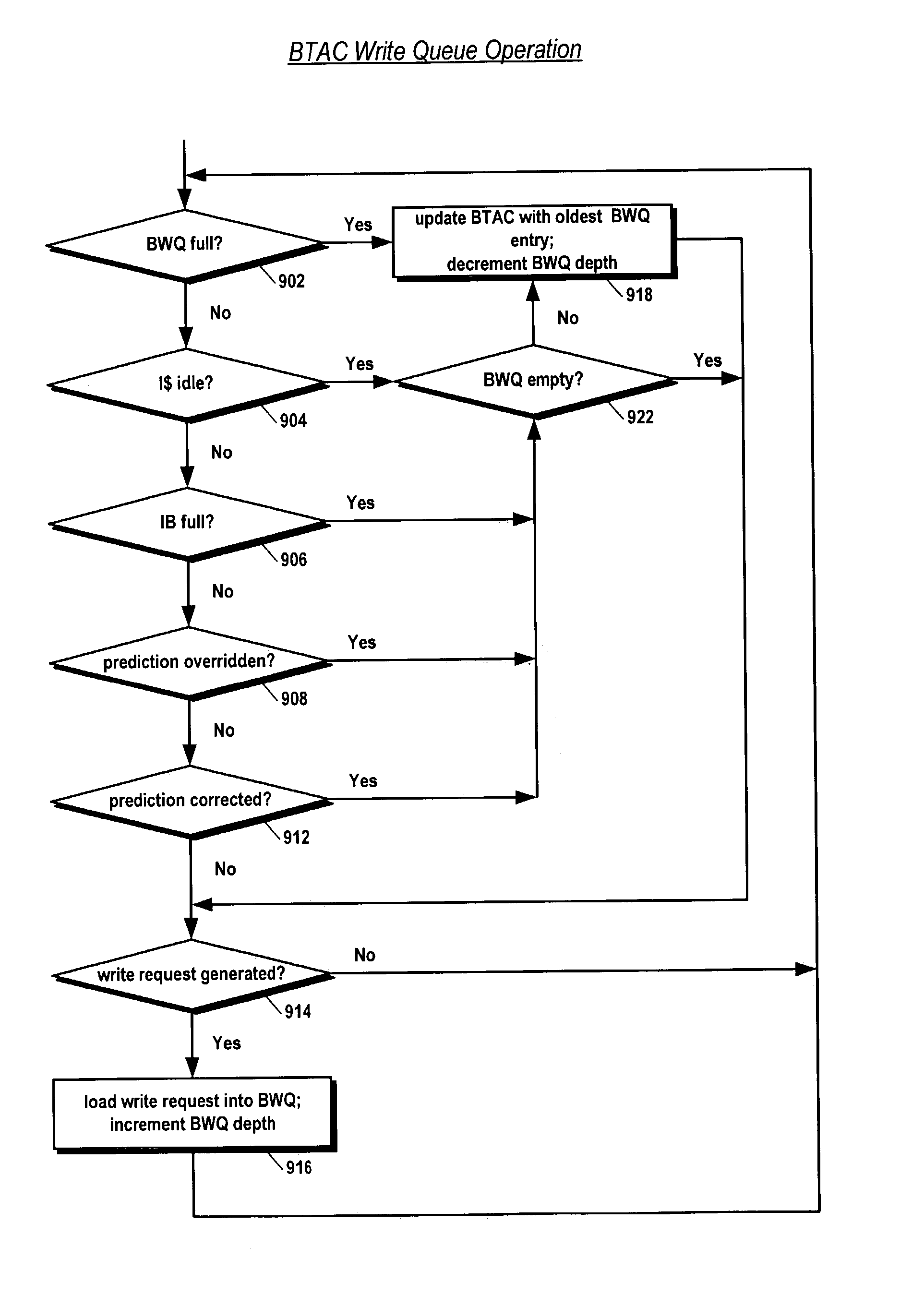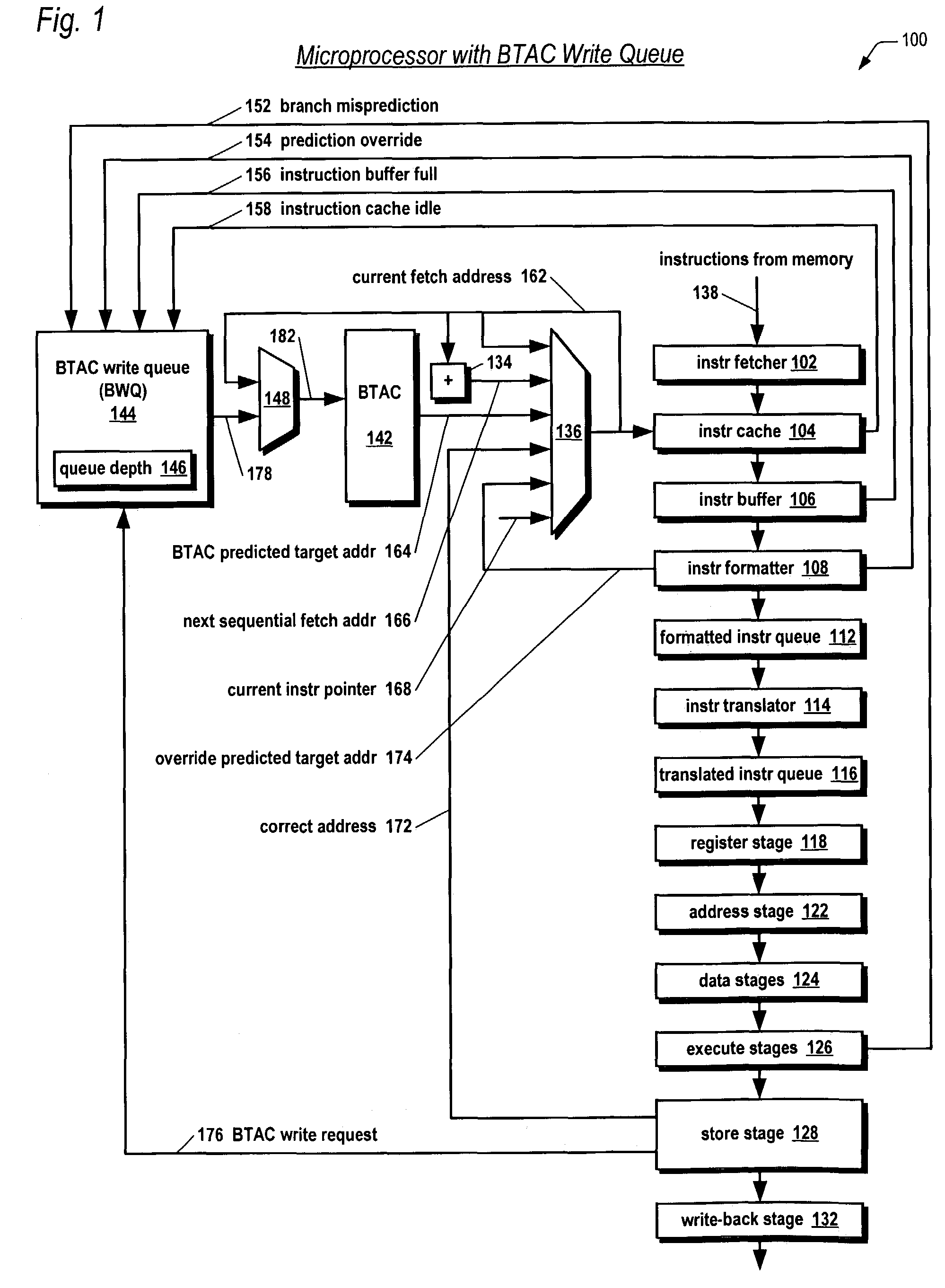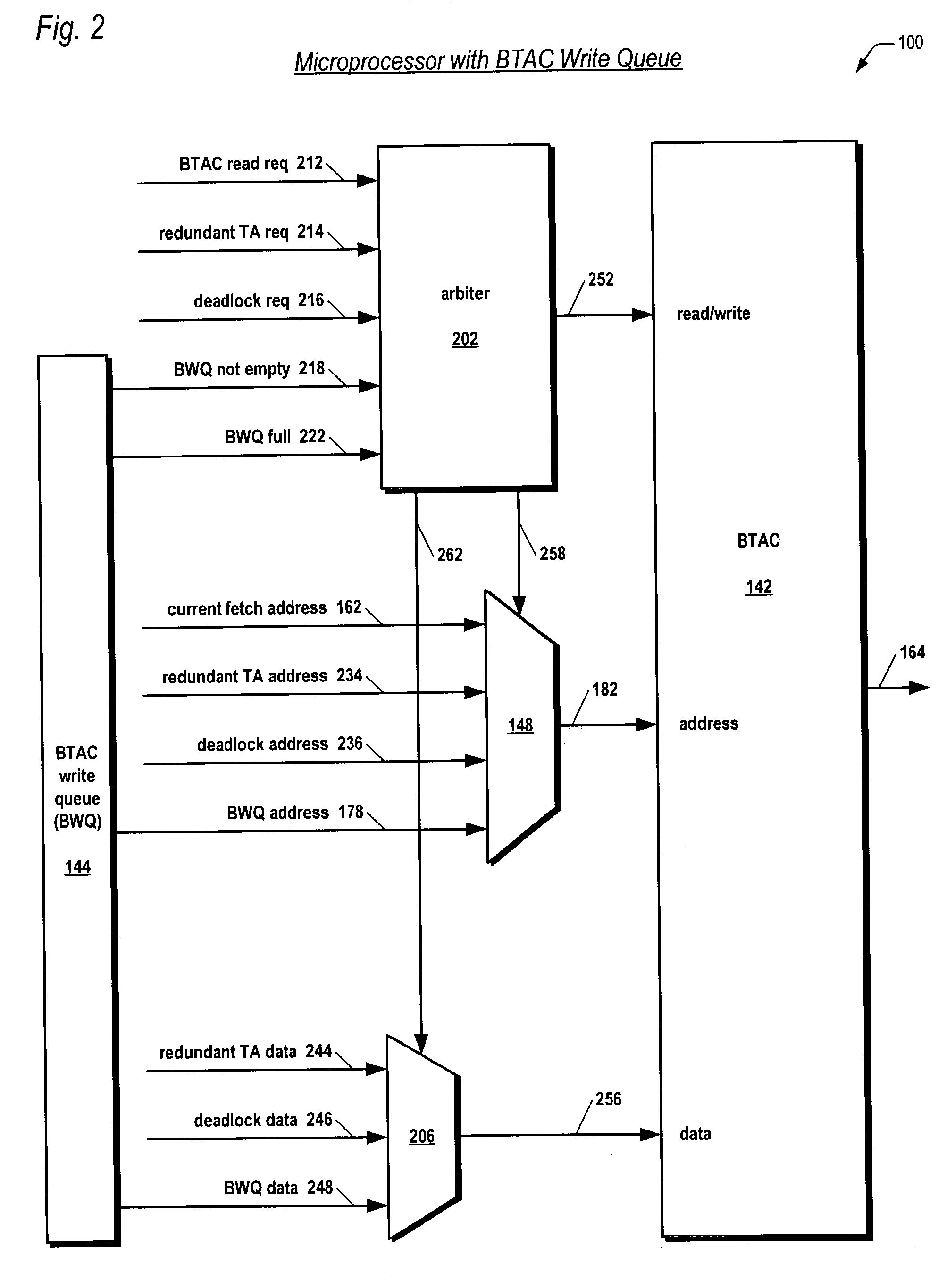Microprocessor with branch target address cache update queue
a microprocessor and target address technology, applied in the field of branch target address cache update queue, can solve the problems of pipeline bubbles, pipeline production, or performance, and reduce the performance of the processor, so as to reduce the size of the btac, increase the efficiency of the btac, and reduce the number of false misses
- Summary
- Abstract
- Description
- Claims
- Application Information
AI Technical Summary
Benefits of technology
Problems solved by technology
Method used
Image
Examples
Embodiment Construction
[0036]Referring now to FIG. 1, a block diagram of a microprocessor 100 according to the present invention is shown. Microprocessor 100 comprises a pipelined microprocessor.
[0037]Microprocessor 100 includes an instruction fetcher 102. Instruction fetcher 102 fetches instructions 138 from a memory, such as a system memory, coupled to microprocessor 100. In one embodiment, instruction fetcher 102 fetches instructions 138 from memory in the granularity of a cache line. In one embodiment, instructions 138 are variable length instructions. That is, the length of all the instructions in the instruction set of microprocessor 100 are not the same. In one embodiment, microprocessor 100 comprises a microprocessor whose instruction set conforms substantially to the x86 architecture instruction set, whose instruction lengths are variable.
[0038]Microprocessor 100 also includes an instruction cache 104 coupled to instruction fetcher 102. Instruction cache 104 receives cache lines of instruction by...
PUM
 Login to View More
Login to View More Abstract
Description
Claims
Application Information
 Login to View More
Login to View More - R&D
- Intellectual Property
- Life Sciences
- Materials
- Tech Scout
- Unparalleled Data Quality
- Higher Quality Content
- 60% Fewer Hallucinations
Browse by: Latest US Patents, China's latest patents, Technical Efficacy Thesaurus, Application Domain, Technology Topic, Popular Technical Reports.
© 2025 PatSnap. All rights reserved.Legal|Privacy policy|Modern Slavery Act Transparency Statement|Sitemap|About US| Contact US: help@patsnap.com



